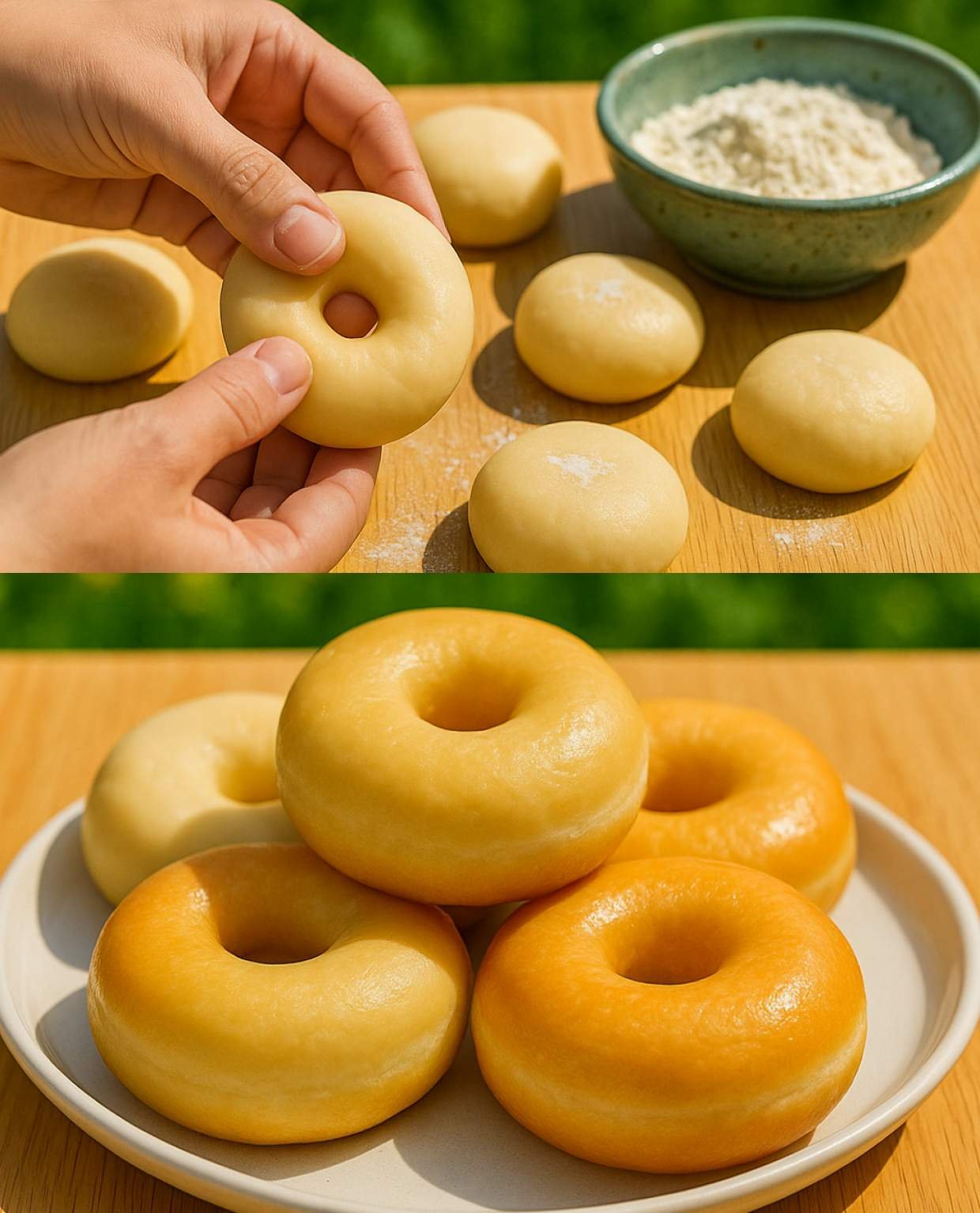There are few things in the world as comforting as biting into a warm, fluffy doughnut. With their soft, pillowy texture and delicate sweetness, doughnuts have long been a beloved treat across cultures. Whether glazed, sugared, or filled with cream or jam, the magic lies in creating a dough that is light and airy yet rich in flavor. Making fluffy doughnuts at home may seem intimidating, but with a little patience and attention to detail, you can achieve bakery-quality results right from your own kitchen.
The Secret to Fluffy Doughnuts
The key to irresistibly soft doughnuts lies in the yeast dough. Proper kneading, rising, and frying at the right temperature are what transform a simple mixture of flour, eggs, milk, and sugar into golden pillows of deliciousness. Yeast helps the dough rise and creates air pockets, giving the doughnuts their tender crumb. Using warm milk activates the yeast, while butter enriches the dough and adds flavor. Allowing the dough to proof adequately before frying ensures that the doughnuts are airy instead of dense.
Another essential factor is frying temperature. Too hot, and the doughnuts will brown quickly but remain raw inside. Too cool, and they’ll absorb excess oil, becoming greasy. The sweet spot is usually around 350°F (175°C), where the doughnuts puff up beautifully and develop a golden-brown exterior while staying moist and fluffy inside.
Ingredients
To make about 12 fluffy doughnuts, you will need:
-
3 ½ cups all-purpose flour (plus more for dusting)
-
2 ¼ teaspoons (1 packet) active dry yeast
-
¾ cup warm milk (about 110°F/43°C)
-
¼ cup granulated sugar
-
2 large eggs, room temperature
-
5 tablespoons unsalted butter, softened
-
½ teaspoon salt
-
1 teaspoon vanilla extract
-
Vegetable oil, for frying
Optional toppings:
-
Powdered sugar, cinnamon sugar, or glaze (made with 1 cup powdered sugar, 2–3 tablespoons milk, and ½ teaspoon vanilla)
Step-by-Step Instructions
1. Activate the yeast
In a small bowl, combine the warm milk, a teaspoon of sugar, and the yeast. Stir gently and let it sit for 5–10 minutes until the mixture becomes frothy. This indicates that the yeast is alive and ready to work.
2. Make the dough
In a large mixing bowl, whisk together the flour, remaining sugar, and salt. Add the eggs, butter, vanilla, and the activated yeast mixture. Mix until the dough begins to come together. If using a stand mixer, fit it with the dough hook and knead for about 6–8 minutes. If kneading by hand, work the dough on a lightly floured surface for about 10 minutes, until it becomes smooth, elastic, and slightly tacky but not sticky.
3. First rise
Place the dough into a lightly greased bowl, cover with plastic wrap or a damp kitchen towel, and let it rise in a warm spot for 1–2 hours, or until it has doubled in size. This resting period allows the yeast to release carbon dioxide, which expands the dough and gives it its airy texture.
4. Shape the doughnuts
Once risen, punch down the dough to release air. Roll it out on a floured surface to about ½-inch thickness. Use a round cutter (about 3 inches in diameter) to cut out circles. If you want traditional ring doughnuts, use a smaller cutter to cut out the centers. Place the shaped doughnuts on a floured baking sheet, cover loosely, and let them rise again for 30–45 minutes, until puffy.
5. Fry the doughnuts
Heat oil in a deep pot or fryer to 350°F (175°C). Fry the doughnuts a few at a time, being careful not to overcrowd the pot. Cook each side for about 1–2 minutes until golden brown. Remove with a slotted spoon and drain on paper towels.
6. Finish with toppings
While still slightly warm, toss the doughnuts in powdered sugar, roll them in cinnamon sugar, or dip them into glaze. If you prefer filled doughnuts, allow them to cool slightly, then pipe in jam, custard, or cream through a pastry bag fitted with a small tip.
Tips for Perfect Doughnuts
-
Proof properly – Don’t rush the rising process. A well-risen dough creates light, fluffy doughnuts.
-
Check oil temperature – Use a thermometer to maintain consistent heat; fluctuations can affect texture.
-
Don’t overcrowd – Fry only a few doughnuts at a time so they cook evenly and don’t absorb too much oil.
-
Use fresh yeast – Expired or inactive yeast will result in dense doughnuts.
-
Enjoy fresh – Doughnuts are best eaten the same day they’re made, while still soft and warm.
Variations
Once you master the base recipe, you can experiment with endless variations. Try dipping them in chocolate glaze and topping with sprinkles for a classic touch. Fill them with custard, lemon curd, or Nutella for indulgence. You can even roll them in crushed cookies or toasted coconut for added texture. For a seasonal twist, add a touch of nutmeg or cinnamon to the dough itself.
Conclusion
Making fluffy doughnuts at home is a labor of love, but the reward is well worth the effort. With a golden crust, a cloud-like interior, and endless possibilities for toppings and fillings, these homemade treats will outshine anything you can buy at the store. Whether enjoyed with your morning coffee, as an afternoon pick-me-up, or as a sweet indulgence for special occasions, fluffy doughnuts are a timeless delight. Once you try making them yourself, you may never look at boxed doughnuts the same way again.
